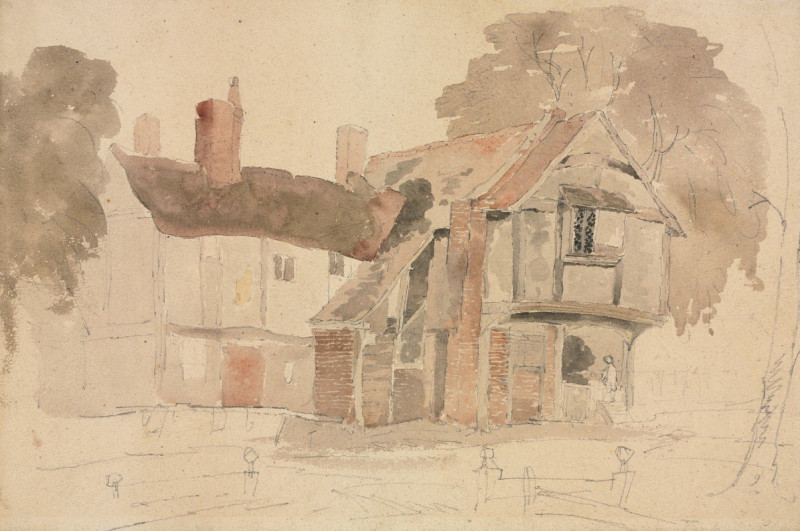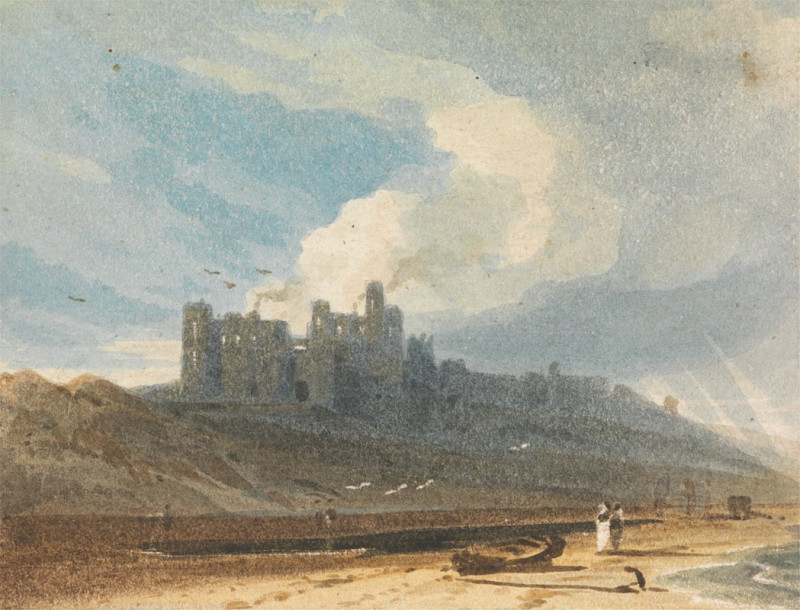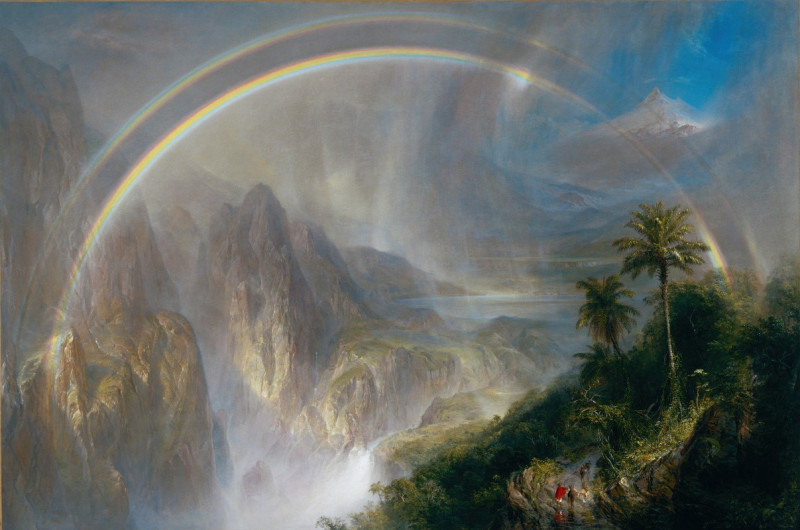Conway in North Wales (1803)
Technique: Giclée quality print
Recommended by our customers
More about this artwork
John Varley's watercolor painting "Conway in North Wales" (1803) captures a serene, historical scene embodying the essence of life in early 19th-century Wales. This artwork depicts a charming street view within the town of Conway, now known as Conwy, renowned for its medieval architecture and picturesque landscapes.In Varley's composition, the viewer's eye is carried along a cobblestone street lined with rustic, timber-framed buildings that exhibit a rich character and the wear of time. The palette is earthy, dominated by soft browns, greys, and the warm tones of aging wood, bringing a gentle, calm aura to the scene. The painting features a horse-drawn cart in the middle of the street, which along with a few local inhabitants, adds a human touch and a sense of daily activity to the otherwise tranquil setting.On the left, a small figure sits outside a building, suggesting a moment of rest or social interaction, typical of small-town life. Furthermore, the careful detail of the architecture — from the uneven roof lines to the varied facades of the buildings — showcases Varley's skillful observation and his ability to capture the unique essence of a place."Conway in North Wales" not only stands out for its refined artistic execution but also serves as a historical snapshot, transporting viewers back to a moment in time in this quaint Welsh town.
Delivery
Returns
John Varley was an English watercolour painter and astrologer, and a close friend of William Blake. They collaborated in 1819–1820 on the book Visionary Heads, written by Varley and illustrated by Blake. He was the elder brother of a family of artists: Cornelius Varley, William Fleetwood Varley, and Elizabeth, who married the painter William Mulready.














































